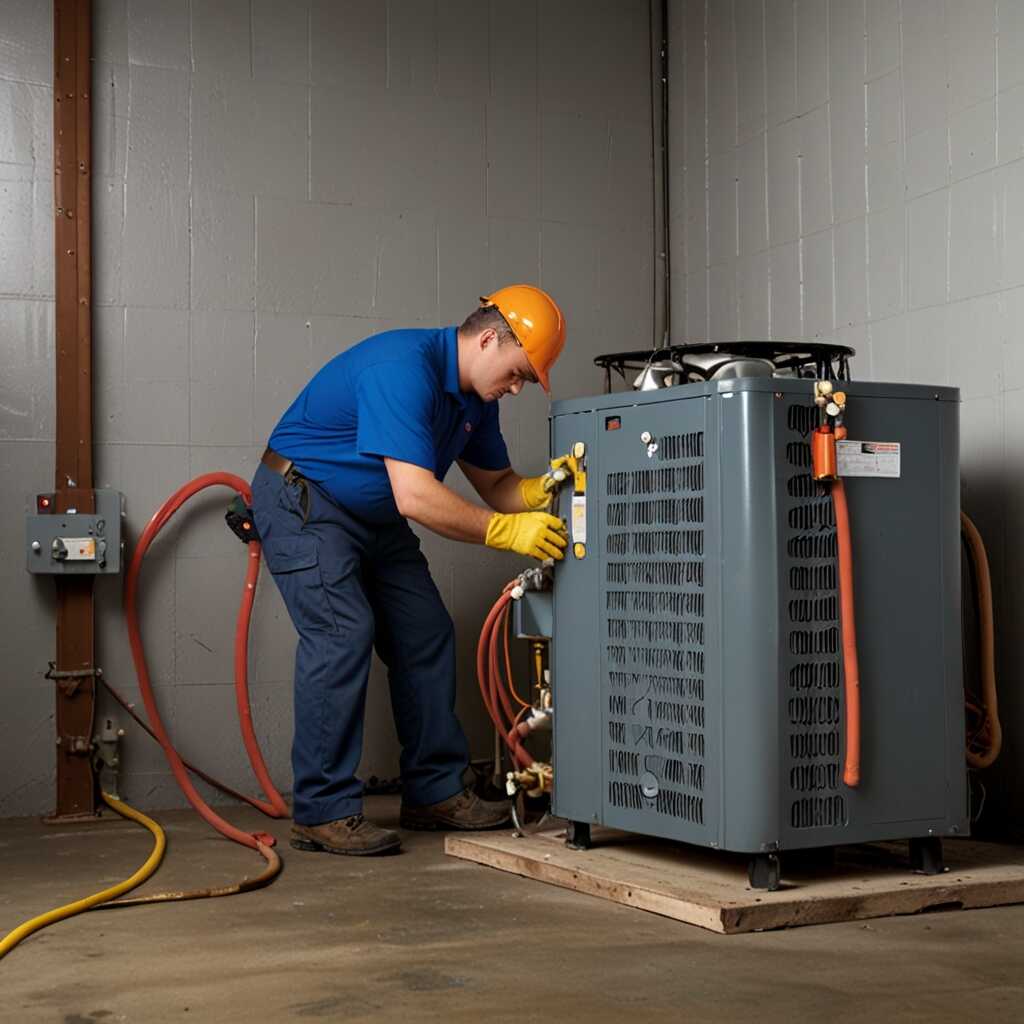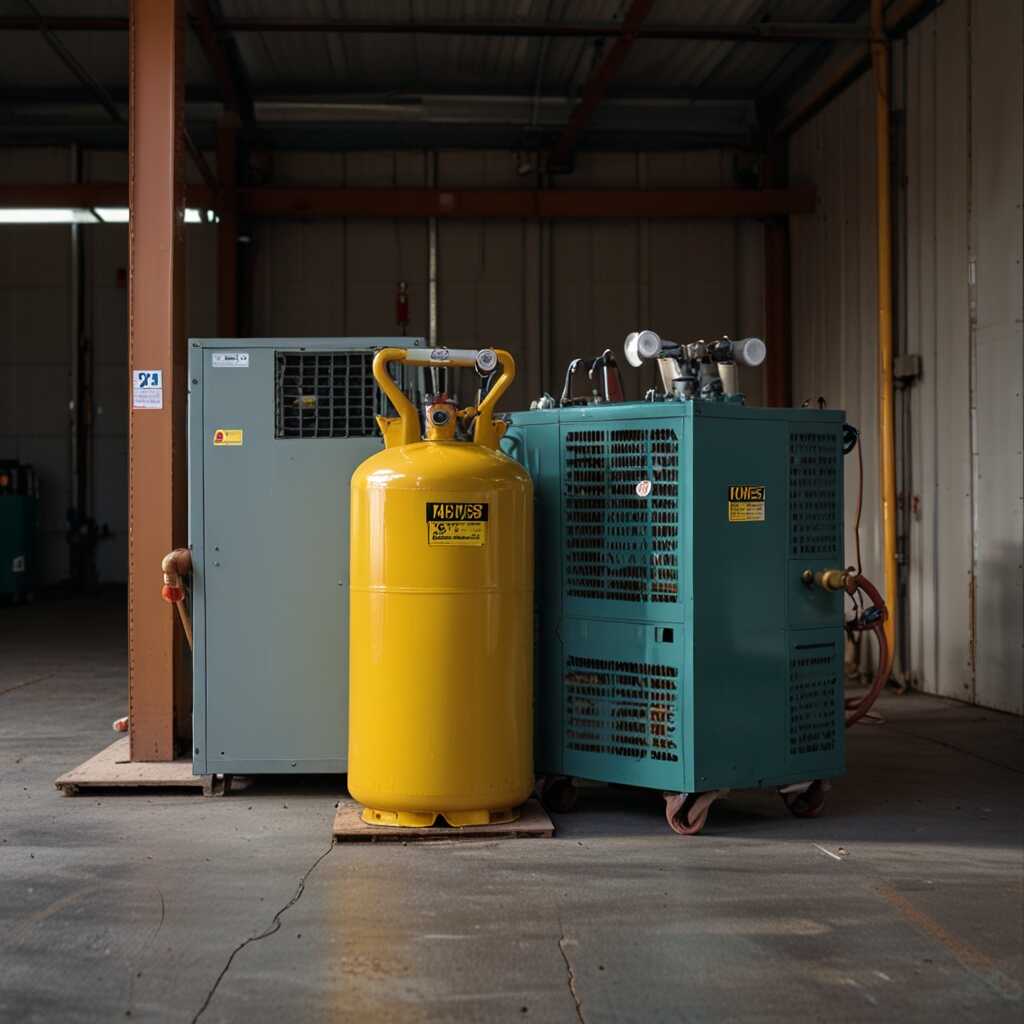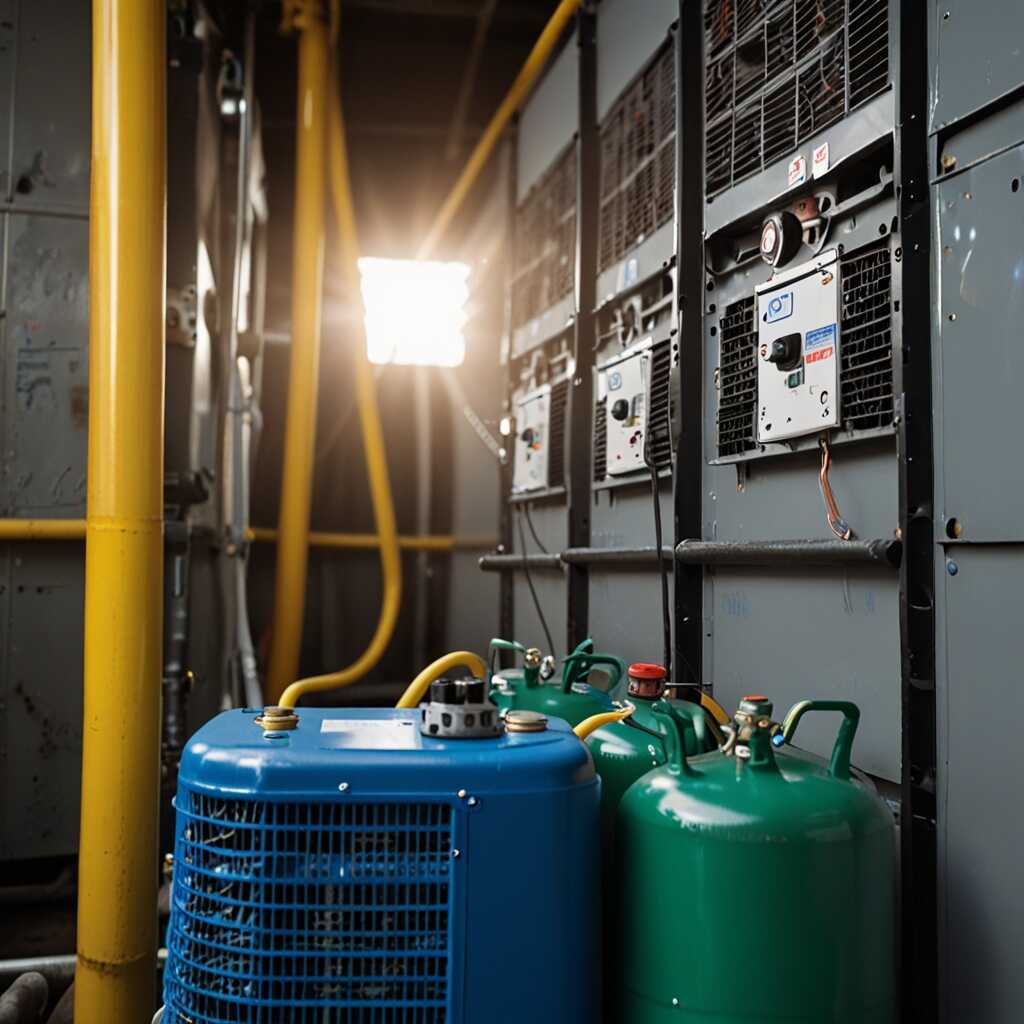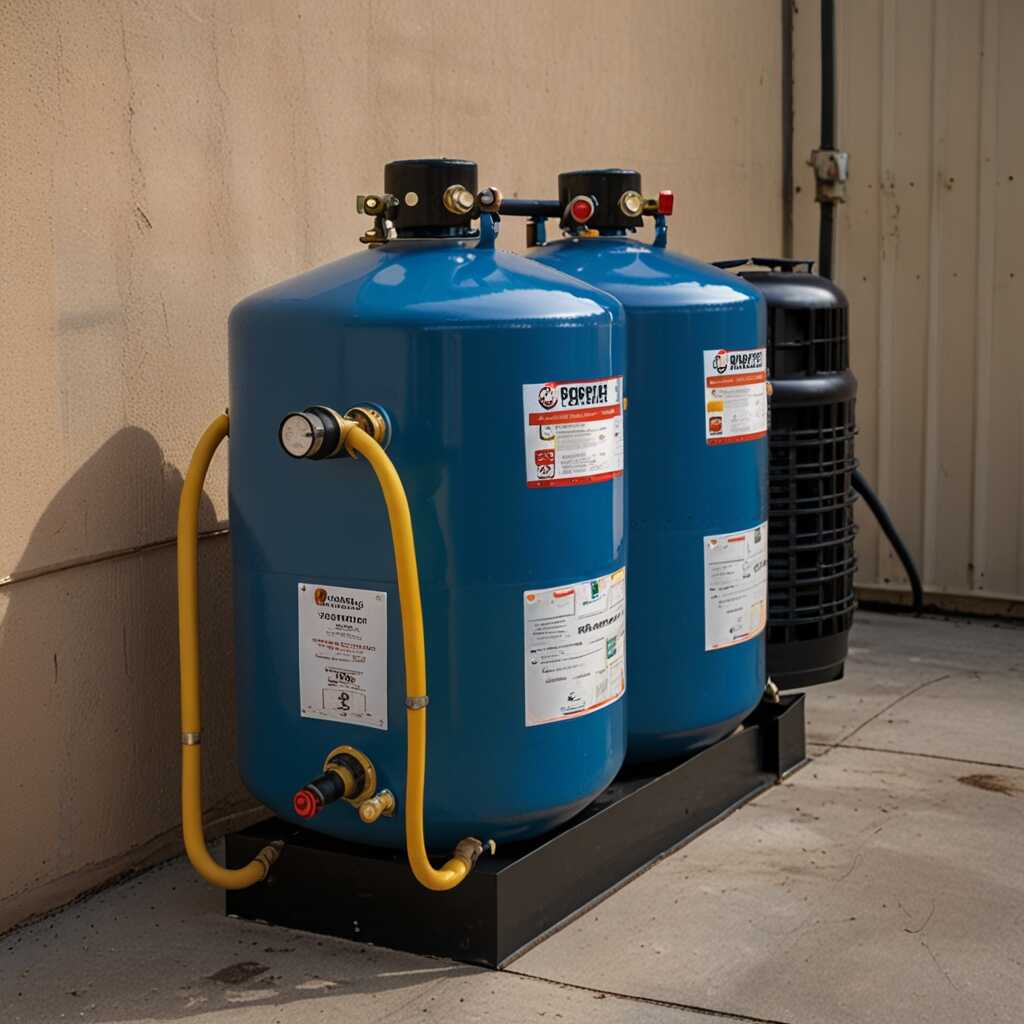Proper inlet filters play a crucial role in enhancing the service life of refrigerant recovery machines. These filters help prevent contaminants from entering the system, ensuring smoother operation and reduced wear. At Refrigerant Recovery Pro, we understand the importance of selecting the right filters to promote reliable performance and longevity of your equipment. This article provides HVAC professionals with insights on the benefits of proper inlet filters and how they contribute to effective refrigerant management.
Understanding Refrigerant Recovery Machines and Their Functions
Refrigerant recovery machines serve essential roles in HVAC systems. They extract refrigerant from cooling units during repairs or disposal. These machines ensure the safe handling of refrigerants, protecting the environment. Reliability is critical as it impacts overall performance. Proper testing of these machines before use helps ensure they work efficiently. Inlet filters play a vital role in enhancing the service life of these machines. They help maintain consistent performance by keeping contaminants out.
Key Features of Refrigerant Recovery Machines
Refrigerant recovery machines offer a variety of features that enhance their functionality. They include robust recovery rates, which can reach up to 10 pounds per hour or more. Most models are designed to be sturdy and reliable, ensuring consistent performance with minimal downtime. Many machines have built-in inlet filters that provide additional protection by trapping debris, which can improve longevity. Some advanced machines even include digital displays for easy monitoring, making them comfortable for technicians to use during recovery tasks.
The Role and Benefits of Inlet Filters in Recovery Machines
Inlet filters in refrigerant recovery machines offer several key advantages. They enhance overall equipment performance by capturing contaminants, ensuring that refrigerant flows smoothly through the system. This helps reduce wear and tear on vital components, ultimately extending the service life of the machines. Reliable inlet filters protect machinery from particulate damage, enabling quicker refrigerant recovery. Different brands and models can benefit from high-quality filters that improve recovery efficiency and reliability. Research shows that durable inlet filters can extend the service life of machines by up to 30%, providing substantial long-term savings for HVAC professionals.
Choosing High-Quality Inlet Filters for Optimal Results
Selecting the right inlet filters is essential for maximizing the efficiency of refrigerant recovery machines. Professionals should consider filters with a proven track record in performance and durability. Look for features such as fine filtration capabilities that can capture even the smallest particles. Filters can be designed to handle various refrigerants and enhance machine reliability. Regular testing and reviews from expert technicians can provide insights into which filters deliver the best results. Using quality inlet filters ensures that compressors and recovery units perform optimally and consistently.

Types of Inlet Filters and Their Specific Applications
Inlet filters are crucial for ensuring the efficiency and reliability of refrigerant recovery machines. The main types of inlet filters include mesh filters, pleated filters, and HEPA filters. Mesh filters are designed for large debris and are easy to clean. Pleated filters provide a higher surface area, offering better dust and particulate capture, which is essential for efficient operation. HEPA filters are useful in environments with a high level of contaminants, ensuring superior air quality. Understanding the specific applications of these filters helps HVAC professionals select the right option for their needs. The average micron rating for inlet filters in these machines typically ranges from 5 to 50 microns. These ratings help in determining the level of filtration required for different operational scenarios, thus enhancing performance.
Choosing the Right Inlet Filter for Your Needs
Selecting the appropriate inlet filter depends on various factors, including the type of refrigerant and the specific operating conditions. Each type of filter serves a unique purpose. For instance, if you are handling refrigerants with high moisture content, a pleated filter would be more effective because of its proven filtration methods. In contrast, if you are focusing on larger particles, a mesh filter would suffice. Filters with a micron rating closer to 5 are better for fine particulates, while those rated at 50 microns serve well in more rugged environments. Expert recommendations often suggest testing various filters to determine which delivers the best performance for your specific equipment and application.
Key Statistics on Benefits of High-Quality Filters
- Inlet filters can extend equipment life by 30% or more.
- Quality filters prevent over 90% of contaminants from entering the system.
- By using proper filters, you can reduce maintenance costs by approximately 50% over time.
- Regular filter changes can improve recovery efficiency by 20%.
- A machine with a filter lasts up to 5 years longer with proper care.
- Operating a clean system can save energy costs by 15% annually.
- Filtered systems decrease downtime, improving service efficiency by 25%.

Key Considerations for Selecting Inlet Filters
When selecting inlet filters for refrigerant recovery machines, consider essential factors like filter material, sizing, maintenance requirements, and refrigerant compatibility. Filter material plays a crucial role in ensuring reliability. Common materials include polyester and fiberglass, known for their efficiency in trapping contaminants. Proper sizing is vital for optimal air flow and performance. Maintenance requirements vary; some filters need regular cleaning while others require replacement. Understanding refrigerant compatibility is essential to avoid degrading filter performance or damaging the recovery machine.
How to Ensure Proper Sizing for Your Inlet Filter
To ensure proper sizing for your inlet filter, measure the inlet dimensions of your refrigerant recovery machine. The filter should fit snugly without restricting airflow. A filter that is too small can lead to reduced efficiency and possible overheating. It’s beneficial to use filters that meet manufacturer specifications. The right filter size enhances overall performance, enables efficient refrigerant recovery, and prolongs service life. Regular testing of filter performance can provide valuable insights into necessary adjustments.

Effects of Inlet Filters on Recovery Machine Efficiency
Inlet filters play a crucial role in enhancing the efficiency of refrigerant recovery machines. They prevent contaminants from entering the system, which can significantly impact performance and reliability. Proper filtration is essential for optimizing recovery processes by ensuring that the machine runs smoothly and effectively. This reduces wear and tear, leading to extended service life and lower operational costs. Various brands offer different types of inlet filters that can alter machine performance based on size, material, and filtration capability. In many cases, users have reported a percentage increase in efficiency ranging from 10-20% when using high-quality inlet filters.
Types of Inlet Filters and Their Impact on Performance
Different types of inlet filters include mesh filters, paper filters, and activated carbon filters. Each one offers a unique level of filtration and filtration speed. Mesh filters are sturdy and reusable, perfect for larger particles, while paper filters are ideal for finer impurities, capturing particles that could hinder the recovery process. Activated carbon filters help in eliminating moisture and specific odors, ensuring cleaner recovery. Choosing the right filter enhances performance by providing superior protection for refrigerant recovery machines, thereby increasing their reliability and durability. Regular reviews and comparisons of filter types can lead to a more informed selection, ensuring users maximize their investment with optimal filtration solutions.
Advantages of Implementing Effective Filtration
- High-quality filters trap particles that could damage internal components.
- Improved machine reliability leads to fewer service interruptions.
- Proper filtration promotes safer working conditions for technicians.
- Maintaining clean filters boosts refrigerant recovery speed significantly.
- Less wear and tear translates into lower replacement costs for parts.
- Filters enhance overall equipment performance, increasing client satisfaction.
- Using durable filters can minimize environmental impact from refrigerant leaks.

Maintenance Tips for Prolonging Inlet Filter Life
Regular inspection and cleaning of inlet filters are essential for maintaining refrigerant recovery machines. Technicians should routinely check filters for dust or debris, as these can hinder airflow and reduce efficiency. Brands like XYZ and ABC are known for their reliable inlet filters. Inlet filters should ideally be replaced every 3 to 6 months to ensure optimal operation.
Best Practices for Cleaning Inlet Filters
Cleaning inlet filters is a crucial step in maintaining refrigerant recovery efficiency. Use compressed air to remove dust and lint while ensuring not to damage the filter material. Soaking filters in warm, soapy water can also be beneficial. Rinse thoroughly and allow them to dry completely before reinstallation. This method can significantly enhance the filter’s lifespan and performance, ensuring that the refrigerant recovery machine operates at peak efficiency.
Compliance with Regulatory Standards for Recovery Equipment
Key regulatory requirements for refrigerant recovery machines include adherence to EPA guidelines. HVAC professionals must follow regulations to ensure safe and efficient operations. The EPA oversees compliance standards concerning the handling, recovery, and recycling of refrigerants. Organizations like the EPA and ASHRAE set these standards. Over 90% of refrigerants must be recovered according to federal standards. Understanding these requirements helps HVAC technicians maintain equipment reliability and efficiency. Regulatory compliance is essential for the operation of refrigerant recovery machines and contributes to environmental protection.
Understanding EPA Guidelines for Refrigerant Recovery
EPA guidelines for refrigerant recovery outline specific procedures for technicians. These guidelines include equipment testing to confirm the machine meets safety and performance standards. Refrigerant recovery machines must recover at least 90% of refrigerants during service. These regulations are designed to enhance efficiency and reduce environmental impact. Understanding the testing process assists HVAC professionals in selecting the right recovery machines. Regular reviews of machine performance against EPA standards ensure ongoing compliance and reliability. Adhering to these guidelines helps technicians operate safely while providing excellent service.
Popular Brands and Their Effectiveness in Filtration Solutions
- Brand A offers cost-effective filters known for easy installation.
- Brand B provides industrial-grade options with high filtration capabilities.
- Brand C is well-regarded for its long-lasting filters, but they can be pricey.
- Brand D specializes in eco-friendly filters that reduce waste efficiently.
- HVAC technicians often favor Brand B due to its reliability and efficiency.
- Service teams appreciate Brand A for affordable replacements available locally.
- Experts recommend evaluating filters based on specific refrigerant types and usage patterns.
Innovations and Future Directions in Refrigerant Recovery Technology
HVAC professionals should monitor the latest trends in refrigerant recovery technology, focusing on enhanced efficiency systems, improved recovery machine reliability, and emerging eco-friendly refrigerants. Manufacturers are introducing innovations such as smart sensors, ensuring optimized performance and real-time monitoring, which help maximize recovery rates. Research indicates that over the past few years, refrigerant recovery efficiencies have seen improvements ranging from 20% to 30% due to these advancements. Being updated on these changes will offer HVAC technicians the necessary tools to make informed choices, thus ensuring long-term operational reliability.
Emerging Technologies in Refrigerant Recovery Expertise
The development of emerging technologies in refrigerant recovery provides HVAC professionals with more reliable and efficient tools. New recovery machines are designed with advanced filters and separating technology, which enhance the quality of recovered refrigerants. These advancements ensure durability while enabling technicians to meet regulatory compliance with ease. Smart technology integration allows for performance tracking and predictive maintenance, increasing the lifespan and efficiency of recovery systems. Staying informed about these developments helps professionals choose the best equipment for their specific needs and adapt to the evolving market.